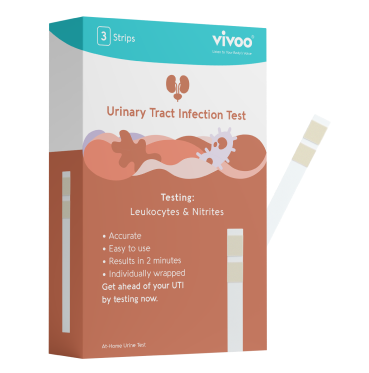Going to the hospital can help with a variety of issues, but it can be costly to get checked up every time you feel different. No one can deny the importance of mental health, so we have compiled a mental health self-care checklist that you should always follow to ensure your mental health is in good condition. Before that, let’s go over the basics of mental health.
A person's mental health is more than the absence of mental illness. It is a state of well-being of a person and whether they feel good and function well in the world. Mental illness or mental health disorders refer to a variety of conditions that affect one's mental health. Individuals' moods, thinking, and behavior are all affected by mental disorders.
Anxiety, depression, addiction, eating disorders (anorexia and bulimia), and schizophrenia are examples of common mental disorders. Many mental disorders can significantly impair one's ability to function normally, work, study, or maintain one's quality of life, negatively impacting one's quality of life.
What are the steps you should take to look after your mental health?
It is important to look after your mental health. We all face difficulties in life. People with good mental health are more likely to be able to deal with ups and downs. You have probably good mental health if:
- You are self-assured when confronted with new situations or people.
- you have a positive attitude
- You are not always to blame.
- cope with life's normal stresses
- work efficiently
- realize your full potential
- make a contribution to the community
- Socialize with community
- you set objectives
- you are pleased with yourself
- You have high self-esteem.

A well-designed checklist can help to reduce unexpected issues during and after treatment. Many of us already use lists to keep track of what we need to remember and do – daily schedule lists, exercise lists, shopping lists, to-do lists, packing lists for trips, grocery lists, and so on.
Checklist for good mental health
It is important to manage your mental health no matter how stressed out you are. Ways to do so include:
- Have gratitude: Consider your blessings. Keep a gratitude journal and write down the positive things that happen every day. Over time you will begin to appreciate little things.
- Recognize your strengths: Each of us has unique strengths and weaknesses. Identifying and utilizing your strengths and talents can improve your overall well-being. Using your talents to assist others or contribute to the community gives you a sense of meaning and purpose.
- Create connections: The most important factor contributing to a sense of well-being is having positive relationships with others. Relationships with family, friends, coworkers, and others in the community are examples of this. Your ability to create connections shows that you have the mental fortitude to be social.
- Maintain your health by exercising: Exercise has been shown to improve mood and reduce symptoms of depression and anxiety. A healthy diet, avoiding alcohol and other drugs, getting a good night's sleep, and visiting the doctor on a regular basis can all contribute to better mental health.
- Flow: Flow is defined as being so engrossed in an enjoyable activity that you lose track of time. This usually occurs when the level of difficulty is about right for your skill level. Work, hobbies, creative arts, and sports can all lead to a state of flow.
- Donate to others: Making a small contribution to the community improves social and mental well-being. Many people feel a sense of accomplishment when they do meaningful work, but this can also include volunteering, assisting a neighbor, or performing small acts of kindness.
- Religion or spirituality: Spiritual or religious practices can improve well-being, help people cope with stress, and reduce symptoms of mental illness for some people.
- Seek assistance: Consult your doctor or a mental health professional if you are having difficulty feeling happy, coping with daily life, finding meaning, or feeling connected to others. Almost half of all Australians will suffer from a mental disorder at some point in their lives, with depression, anxiety, and substance abuse being the most common.
What are the signs of mental illness?
Most mental disorder symptoms can be managed conservatively with medications and psychotherapy. Mental illness can strike at any age, and signs and symptoms vary according to the mental disorder and severity of the condition. The following are mental health symptoms checklist:
- Mood swings that are extreme
- Social isolation
- Excessive paranoia, anxiety, or worry
- Prolonged sadness or irritability
- Significant changes in eating or sleeping habits

A more detailed list of signs is:
- Excessive alcohol consumption
- Abuse of drugs
- Appetite suppression or overeating
- Reduced sexual drive
- Suicidal ideation (requires immediate medical attention)
- Lack of concentration
- Excessive apprehension
- Unnecessary guilt feelings
- The proclivity to retaliate violently
- Being unable to work or study
- Disorganized speech (speaking in meaningless sentences that make no sense)
- Tiredness and sluggishness
- Insomnia (difficulty sleeping) or excessive sleeping
- Disconnection from reality
- Illusions (false and sometimes unrealistic beliefs in which the person refuses to stop believing, despite providing proof)
- Hallucinations (experiencing unreal sensations such as hearing voices, seeing things, feeling sensations on the skin, smelling strange odors that aren't real).
Maintaining your mental health is of the utmost importance, and having a mental health checklist is an excellent way to manage your mental state no matter how stressed you are. But in cases where your symptoms worsen regardless of your efforts, you should not hesitate to seek professional help. Vivoo has state-of-the-art test kits that can help monitor your hormonal balances, and the Vivoo app allows you to track changes in your levels, order now to get started.















